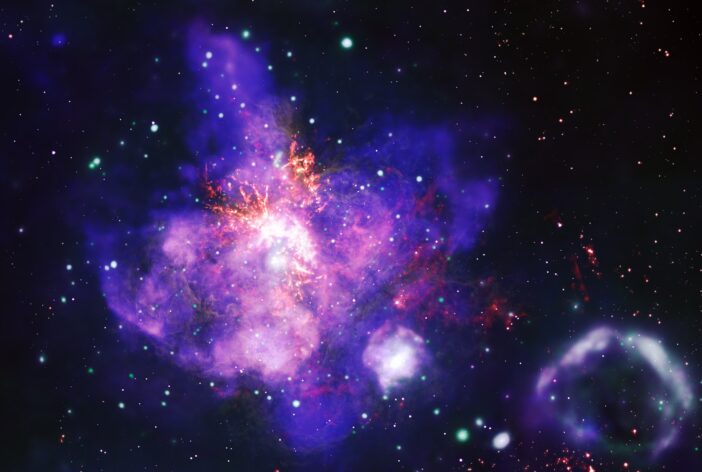Congratulations to Associate Professor Ke Fang on her promotion with tenure, to Professor Justin Vandenbroucke on his promotion to full professor, and to Profs. Dan Hooper and Britton Plourde who were both granted tenure! Prof. …
Read the full article at: https://www.physics.wisc.edu/2025/09/15/four-professors-earn-promotions-including-tenure-for-ke-fang/phys.org news: TeV halos could be a common feature of middle-aged pulsars, study shows
HAWC detection of high-energy gamma-ray emission surrounding middle-aged pulsars
Pulsars are rapidly spinning neutron stars—remnants of massive star explosions—that blast electromagnetic radiation at regular intervals ranging from seconds to milliseconds. As a pulsar rotates, its beams of radiation sweep across outer space like a cosmic lighthouse. Scientists have identified high-energy gamma-ray emission around some pulsars, called TeV halos, but it remains unclear whether TeV [...]
Read the full article at: https://wipac.wisc.edu/hawc-detection-of-high-energy-gamma-ray-emission-surrounding-middle-aged-pulsars/Gamma-Ray Halos May Be Common Around Pulsars
Monthly Roundup: News from the High-Energy Universe

An ultra-high-energy neutrino, a galactic PeVatron, and a fading quasar at cosmic dawn are the subjects of today's Monthly Roundup.
The post Monthly Roundup: News from the High-Energy Universe appeared first on AAS Nova.
Read the full article at: https://aasnova.org/2025/03/31/monthly-roundup-news-from-the-high-energy-universe/HAWC detection of an ultra-high-energy gamma-ray bubble around a microquasar
This story is adapted from the HAWC Collaboration press release. Microquasars—compact regions surrounding a black hole with a mass several times that of its companion star—have long been recognized as powerful particle accelerators within our galaxy. The enormous jets spewing out of microquasars are thought to play an important role in the production of galactic cosmic rays, although [...]
Read the full article at: https://wipac.wisc.edu/hawc-detection-of-an-ultra-high-energy-gamma-ray-bubble-around-a-microquasar/Seeking the Sources of Ultra-High-Energy Cosmic Rays
This story is modified from one originally published by AAS Nova. Where do the highest-energy particles in the universe come from? New research led by WIPAC researchers suggests that the sources of ultra-high-energy cosmic rays aren’t necessarily the sources of ultra-high-energy photons as well. Cosmic Rays Across the Universe Across the universe, extremely energetic charged particles called cosmic [...]
Read the full article at: https://wipac.wisc.edu/seeking-the-sources-of-ultra-high-energy-cosmic-rays/Ke Fang named inaugural recipient of the Bernice Durand Faculty Fellowship
The Department of Physics is pleased to announce that Ke Fang, assistant professor of physics and WIPAC investigator, has received the inaugural Bernice Durand Faculty Fellowship. This fellowship, given in honor of late Professor Emerit …
Read the full article at: https://www.physics.wisc.edu/2024/05/08/fang-durand-fellowship/Two UW–Madison researchers receive prestigious Sloan Fellowships
UW–Madison’s 2024 Sloan Fellows are Ke Fang, assistant professor of physics, and Xiangyao Yu, assistant professor of computer sciences.
Read the full article at: https://news.wisc.edu/two-uw-madison-researchers-receive-prestigious-sloan-fellowships/Ke Fang, Ellen Zweibel earn Simons Foundation funding to study electrodynamics in extreme environments
Much of what we understand about fundamental physics is based on experiments done in the convenient “lab” of earth. But our planet is just one location, with its own relatively mild electromagnetic field. Do forces …
Read the full article at: https://www.physics.wisc.edu/2023/08/22/ke-fang-ellen-zweibel-earn-simons-foundation-funding-to-study-electrodynamics-in-extreme-environments/